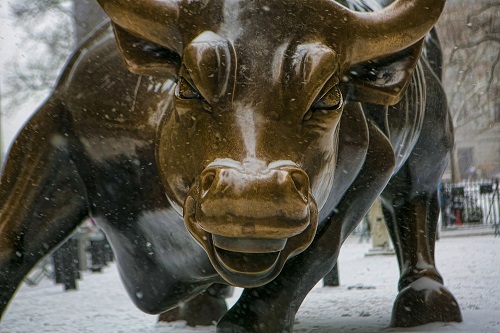- We’re well into a roaring bull market, but there are fewer Americans invested in stocks now than before the 2008 crash.
- Alexander Green explains why that’s a good thing.
History shows that investors have a tendency to become complacent late in a bull market.
Convinced that the uptrend will continue indefinitely, they throw caution to the wind and buy stocks with abandon just before a downturn begins.
They have a similar long history of being wrong at the other end of the cycle.
Convinced late in a bear market that stocks will only grind lower – making their losses larger – they capitulate and sell, setting the stage for the next upturn.
This reality is so widely recognized by investment pros it hardly needs mentioning.
But here’s something extraordinary: Almost 11 years into this rip-roaring bull market, there are fewer Americans invested in stocks than before the financial crisis in 2008.
Most households are not taking advantage of this record economic expansion – or the record-long bull market in stocks.
According to data provider Refinitiv Lipper, while the S&P 500 is having its best run in six years, individual investors are fleeing equities at the fastest pace in decades.
And, while it sounds counterintuitive, that is good news for stocks. Let me explain why.
Investment legend John Templeton famously said, “Bull markets are born on pessimism, grown on skepticism, mature on optimism and die on euphoria.”
He was explaining that stocks push higher over time as a result of rising confidence and bullish sentiment.
The real risk often comes late in a bull market, when market participants are convinced that their investments have nowhere to go but up.
(Recall the technology and internet stock bubble in the late 1990s and the housing bubble in the first decade of the new millennium.)
Yet almost no one believes stocks are certain to go up today. Quite the opposite, in fact.
We have low market participation combined with record net withdrawals.
According to The Wall Street Journal, investors have pulled $135.5 billion net from U.S. stock mutual funds and exchange-traded funds this year.
Investors are worried about trade tensions with China, a potential recession in 2020 and an uncertain election next November where capitalism itself is on the ballot.
They have shifted hundreds of billions of dollars into bond and money market funds.
(Ironically, if there is a bubble in world financial markets today, it is almost certainly investment-grade bonds where yields run the gamut from microscopic to negative.)
How should you interpret the fact that investors are mostly out of the market – and more so with each passing day?
As a bullish signal. It means this uptrend may not just have months left to run but years.
Seem tough to swallow? Consider two pertinent facts.
The first is that investors have been disbelievers in this market for a long time.
For most of the past decade I gave lectures at conferences and seminars where I encouraged investors to take full advantage of “the most disrespected bull market in history.”
Most were not persuaded. And even those who agreed found it hard to pull the trigger. But the ones who did bagged some real trophies.
Here’s something else to consider. Many investors are leery because stocks have returned 15% a year over the last decade.
That’s about 50% a year more than the long-term historical return of 10%. They fear the market is at its peak.
Yet the 10-year period before the last was a down decade. The 20-year return of the S&P 500 is just 6.2%.
From this perspective, stocks have underperformed their long-term average by 38% annually for the past 20 years.
The next decade would have to be truly extraordinary to bring the average annual total return for the past 30 years up to its historical 10%.
I’m not suggesting that just because market participation is low, investors are fleeing stocks and the 20-year return on U.S. equities is below average, stocks are bound to rally.
There is always the possibility of a bolt out of the blue – a severe recession, a major hedge fund collapse, a hot war in the Middle East – that would change investment calculations immediately.
But investors leaving the market in droves – especially at this late juncture – is a positive signal, not a negative one.
As Andrew Slimmon, a managing director at Morgan Stanley, noted this week, over the past 35 years every year with a net outflow from equities was followed by an up market the next year.
That bodes well for 2020.
Good investing,
Alex
